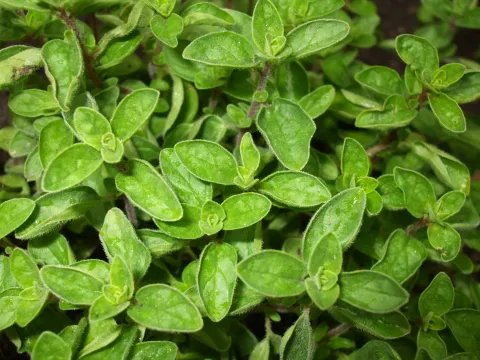
Scientific Name
Origanum spp.
General Information
Oregano is a sun-loving, low-water perennial loved by bees and available in many cultivars, each varying in color, scent, and flavor. Greek and Italian oregano are popular for their strong flavor. The leaves and flowers are edible.
When to Plant
Plant in spring, summer, or fall.
Planting
Plant in full sun from seed (12 inches apart), cutting, or division. Oregano seeds take about 10 days to sprout at soil temperature of 70 degrees.
Soil Requirements
Prefers alkaline soil (high pH), which is prevalent in Northern California.
Water Requirements
Water only when soil has dried out as oregano prefers dry conditions.
Fertilizing
No need to fertilize unless grown in sandy soil or container. Then, apply fish emulsion periodically during growing season.
Pollination
Bees and other beneficial insects.
Harvesting
Harvest frequently.
Storage
Dries well. Harvest when leaves are dry and temperature is cool. Heat makes plant oil dissipate into the air. Make bundles of 7 stems and hang upside down in a dry, warm place. Gravity ensures the oils stay down in the leaves. After about a week, the leaves can be stripped from the stems and stored in glass containers for up to a year.
Good Varieties for Marin
‘Greek’, ‘Italian’, ‘Sicilian’, ‘Compacta Nana’
Helpful Tips
Cut the rangy stems back to ground in fall. Best to divide and re-plant every four years.
Common Problems
Generally speaking, oregano is problem-free.
Pests- Diseases & More
If aphids and spider mites appear, hose them off. If rust attacks, cut it out.

